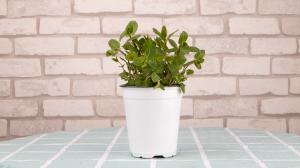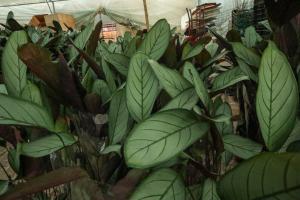Can a Rubber Tree Plant be Grown from a Cutting?
Many plant enthusiasts and hobbyists wonder if rubber tree plants, also known as Ficus elastica, can be grown from cuttings. The answer is a resounding yes! Rubber tree plants are known for their ability to propagate from cuttings and grow into healthy, thriving plants. In this article, we'll explore the process of propagating rubber tree plants from cuttings and provide some tips and tricks for ensuring success.
Preparing the Cutting
The first step in propagating a rubber tree plant from a cutting is to select a healthy, mature stem that is about 6-8 inches long. It's important to choose a stem that has at least 2-3 leaves and several nodes, which are the small bumps found underneath the leaves where new growth can occur.
Next, you'll need to prepare the cutting by removing the lower leaves, leaving just 2-3 leaves at the top. This will help the cutting conserve its energy and focus on growing new roots. You can also dip the cut end of the stem into rooting hormone, which can help promote faster root growth.
Planting the Cutting
Once you've prepared the cutting, you can plant it in soil or water. If you choose to plant it in soil, make sure to use a well-draining potting mix and create a hole that is deep enough to accommodate the entire length of the cutting. Gently pack the soil around the stem and water it well.
Alternatively, you can place the cutting in a jar or vase filled with water, making sure that at least one node is submerged. Change the water every few days to prevent bacterial growth and rot. After a few weeks, you should start to see roots forming at the bottom of the stem.
Caring for the Cutting
Regardless of whether you choose to plant your rubber tree cutting in soil or water, it's important to provide it with the right conditions to encourage growth. Place the cutting in a warm, humid spot with bright, indirect sunlight. You can also cover the plant with a plastic bag or dome to increase humidity and promote faster growth.
Make sure to keep the soil or water consistently moist, but not waterlogged. You can gently tug on the stem after a few weeks to check if the roots have begun to grow. Once the roots are established, you can start to fertilize the plant with a balanced plant food to encourage healthy growth.
The Bottom Line
Overall, propagating a rubber tree plant from a cutting is a great way to grow your collection of plants and share them with others. With a little patience and care, you can successfully grow a healthy, vibrant rubber tree plant that will provide enjoyment and beauty for years to come.

 how many times do yo...
how many times do yo... how many planted tre...
how many planted tre... how many pine trees ...
how many pine trees ... how many pecan trees...
how many pecan trees... how many plants comp...
how many plants comp... how many plants can ...
how many plants can ... how many plants and ...
how many plants and ... how many pepper plan...
how many pepper plan...
































